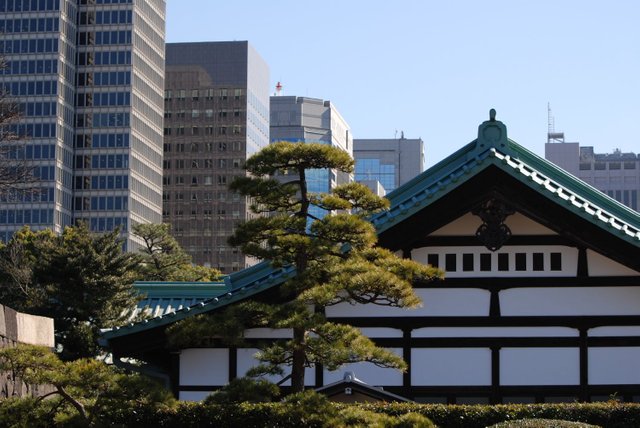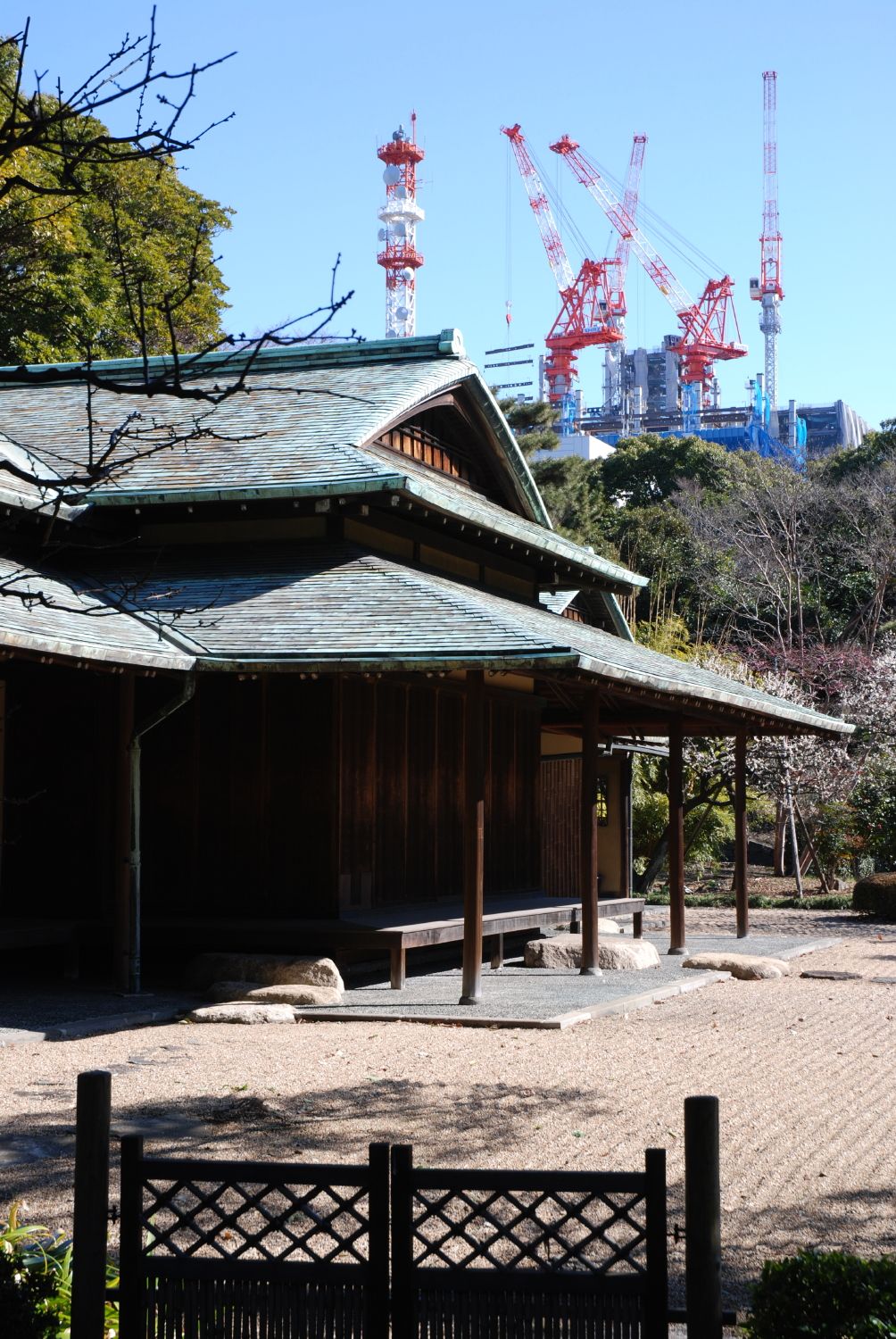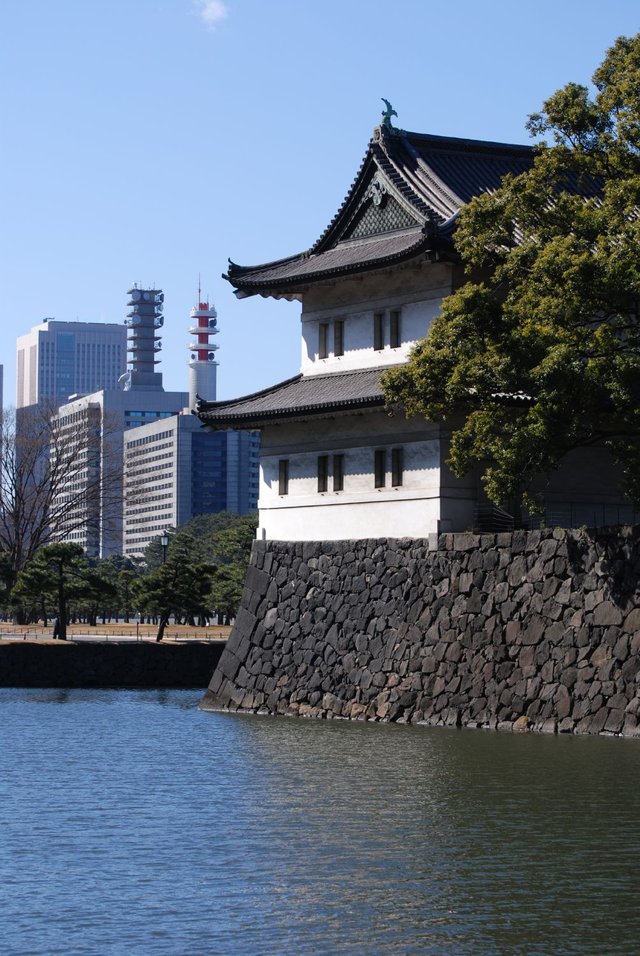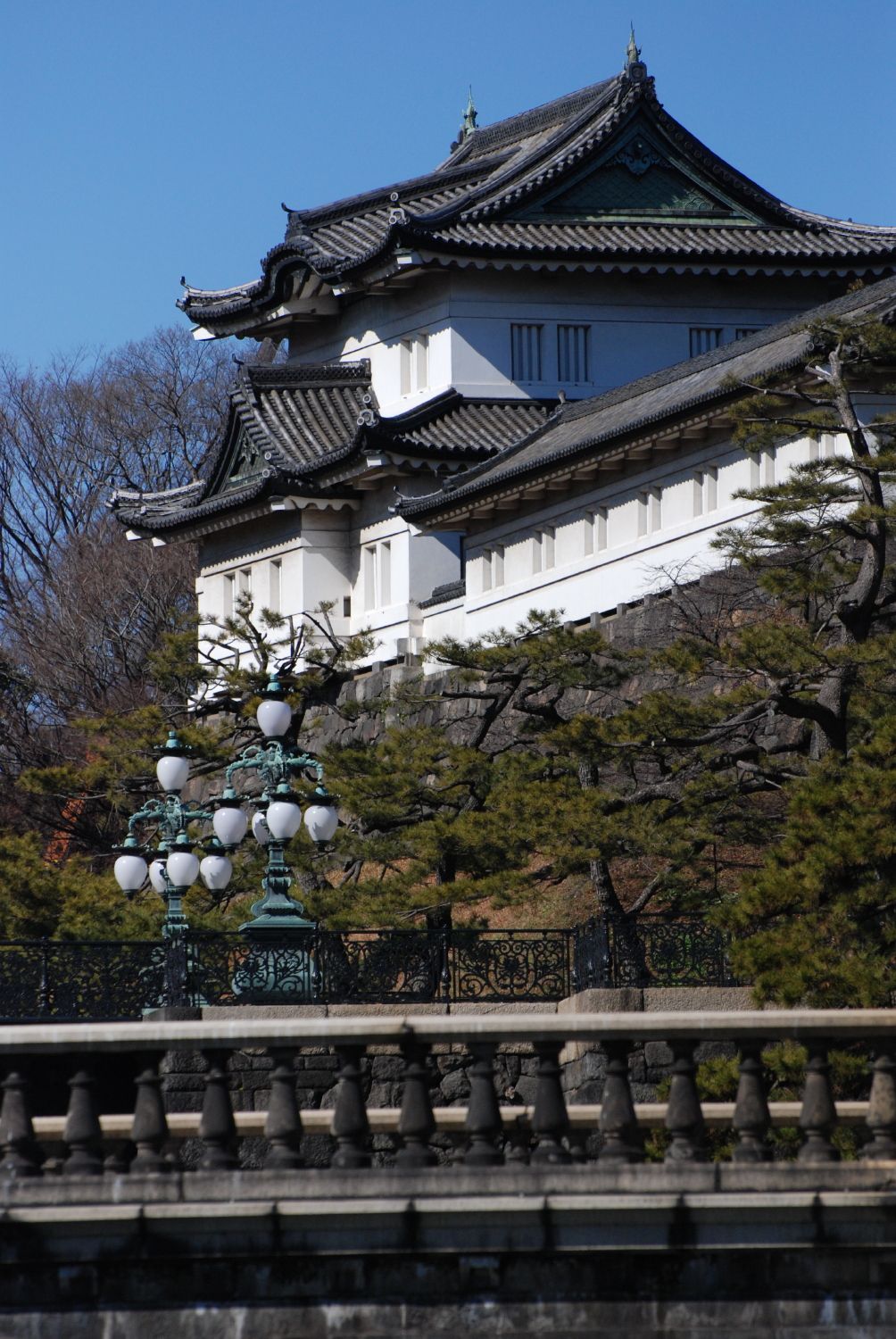Tokyo Imperial Palace, Tokyo, Japan
The Imperial Palace in Tokyo (Kōkyo 皇居) is home to the Japanese imperial family. Originally the site of Edo-jō 江戸城 Castle, it was converted into an imperial palace at the beginning of the Meiji 明治 period (1868-1912) when the Shōgun 将軍 was forced to leave having lost a civil war. Covering an area of over one square kilometre, the palace grounds contain numerous buildings both new and old, as well as the offices of the Imperial Household Agency and many different gardens.


Located in the very centre of Tokyo, in the middle of the business district, the palace is overlooked by many modern high-rise buildings, banks, insurance companies and the like. Still surrounded by the castle's original moat -- used a jogging parcour by many Tokyoites -- the palace and its buildings stand as a symbol of old Japan: the contrast in architectural styles con not be more stark.



The Seimon Ishibashi 正門石橋 Bridge, built in the Meiji era to replace an earlier wooden version, is one of the most photographed and iconic parts of the palace. The white building behind it is the Fujimi-yagura 富士見櫓 Tower, formerly a watch-tower whose name literally means "Mount Fuji View." Just behind it (if you look carefully) is another bridge, the Nijū-bashi 二重橋 Bridge.


While you have to pay to get into the palace itself, it's free to walk along the moat and admire the view. If you're lucky (if you like that kind of thing, that is!), you might even catch a glimpse of the emperor or one of his family coming from or going to some special event outside the palace.